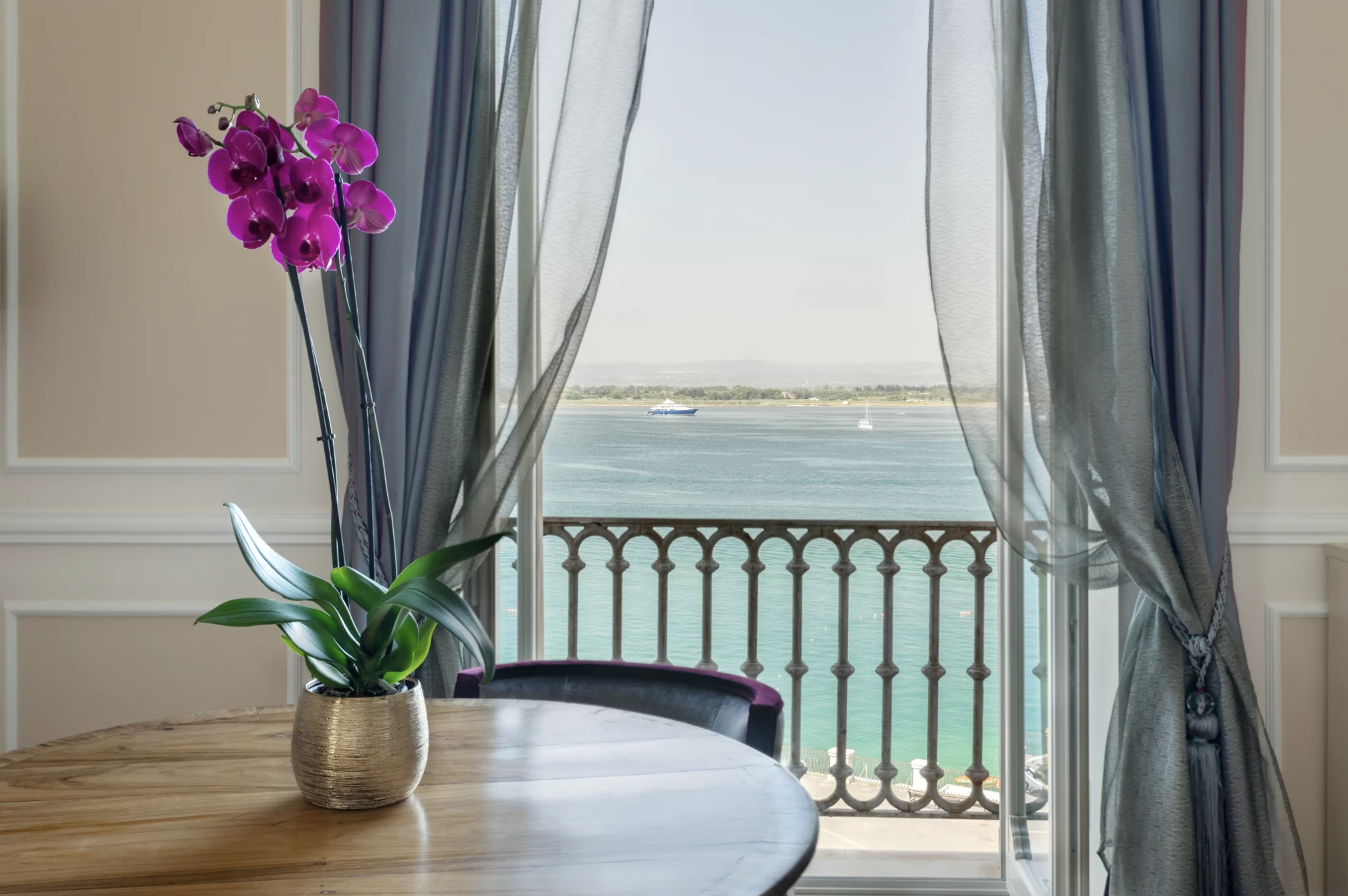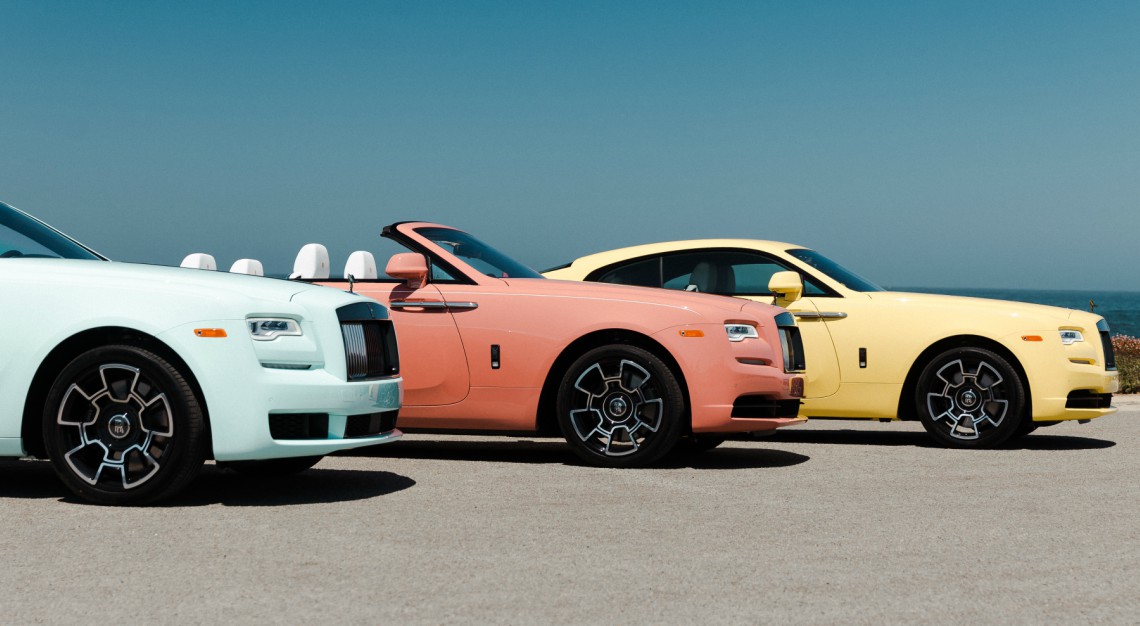
Beyond Signature Colours: The Painted History Of Colourful Cars
We’ve come a long way from having a handful of colours to choose from.
Related articles
One of the more famous quotes attributed to Henry Ford about the Model T, the first mass-produced car in history goes something along the lines of buyers being able to have it in any colour they wanted, as long as it was black.
Now, we know this to most likely an urban legend, because in the Model T’s incredibly long lifespan from 1908 to 1927, it was available from the factory in six other colours, meaning that colours on cars, even if just one was available is and was hugely important.
In the early years of Grand Prix racing (prior to World War II), European nations raced each other, with the colours the cars were painted in denoting the team’s country of origin. The French had blue, the Italians red, the British green and the Germans white (which later became silver).
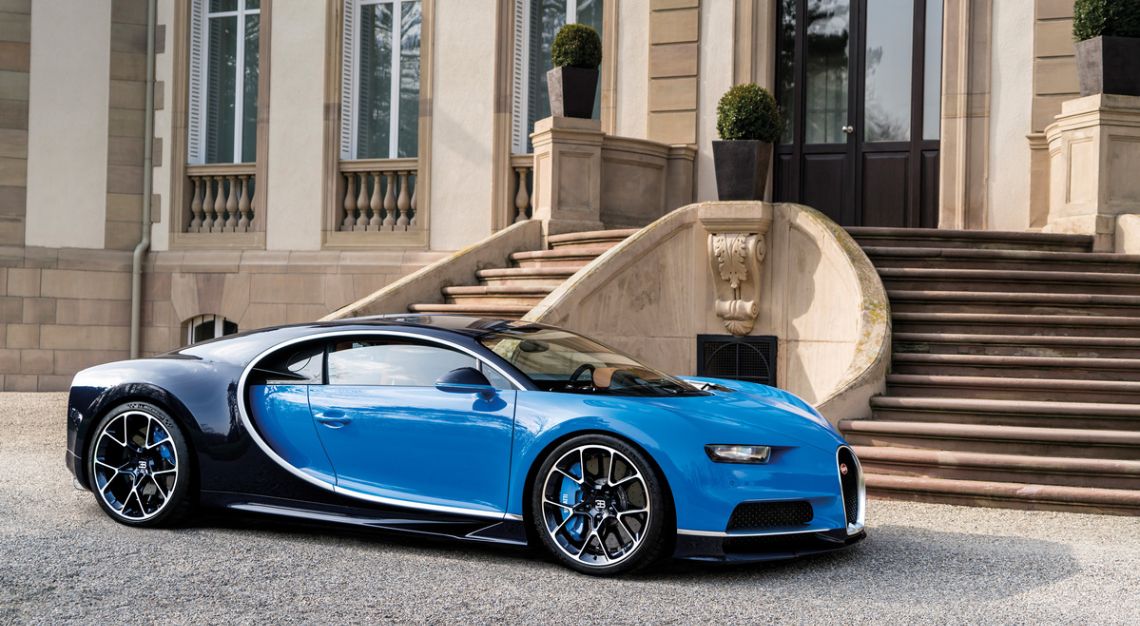 These colours would later go on to become legendary, and even today, marques still reference those historic racing colours. Bugattis are often pictured in blue, Ferraris in red, Bentley in green, Mercedes-Benz in silver, and for that matter, a Rolls-Royce limousine in black.
These colours would later go on to become legendary, and even today, marques still reference those historic racing colours. Bugattis are often pictured in blue, Ferraris in red, Bentley in green, Mercedes-Benz in silver, and for that matter, a Rolls-Royce limousine in black.
According to Michael Bryden, lead designer at Rolls-Royce Bespoke, “There has been a constant shift to more vibrant and characterful colours on our motor cars over the last few years, both in response to customer preferences and evolving trends.”
Bryden continued, “Black was often seen as an ‘official’ colour on some of our more formal cars such as Phantom but over time, our model range has become less formal, with models such as Wraith, Dawn and Culllinan. Each has its own distinctive characters.”
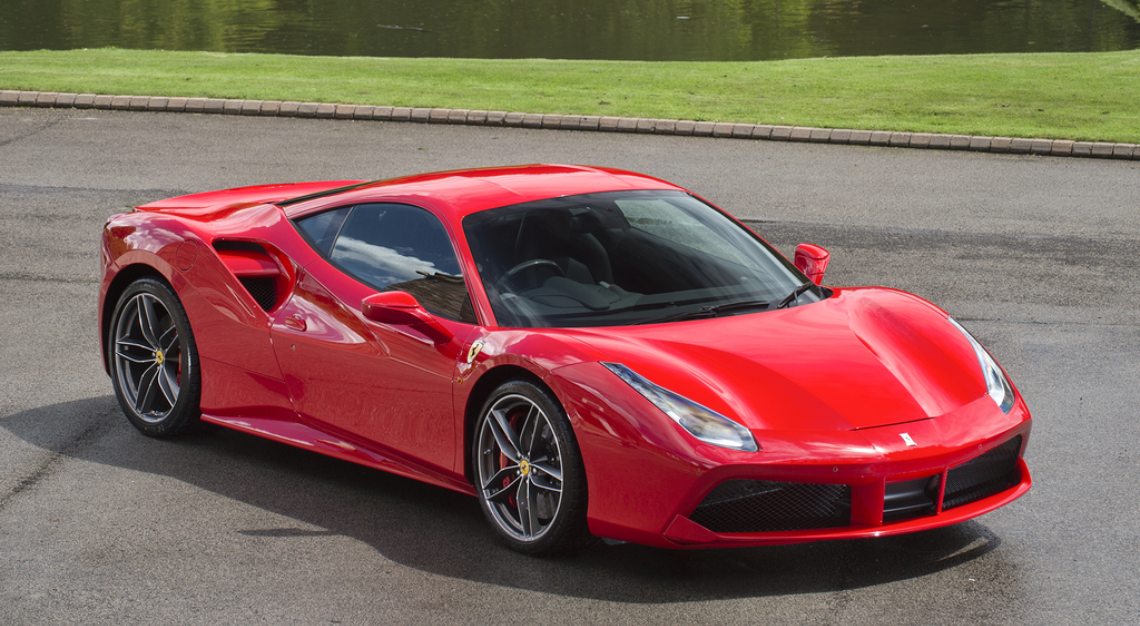
But what of Ferrari and its famed Rosso Corsa (racing red), which has become the de facto colour for any Ferrari, though over time this has since expanded to include other shades of red, such as Rosso Scuderia and Rosso Portofino.
A Ferrari spokesperson did tell us that Maranello has, in recent years, made “a conscious decision regarding launch colours to differentiate between [the] Sports and GT cars.” And also added that “clients have responded well to the increase in availability of different colours and shades.”
And it seems this gentle encouragement has worked. We’re a long way away from the early ’90s, where the same Ferrari spokesperson said almost 90 per cent of cars sold were red. That being said, even in 2019, nearly half of every new Ferrari sold was in a shade of red. Which goes to show how inextricably linked that colour is to the house of the prancing horse.
But Ferrari is an outlier here. Some other car brands and models don’t have such strong links to an exterior paint scheme, though possibly in recognition of how strong the emotional connection is, they’re certainly taking a shot at it.
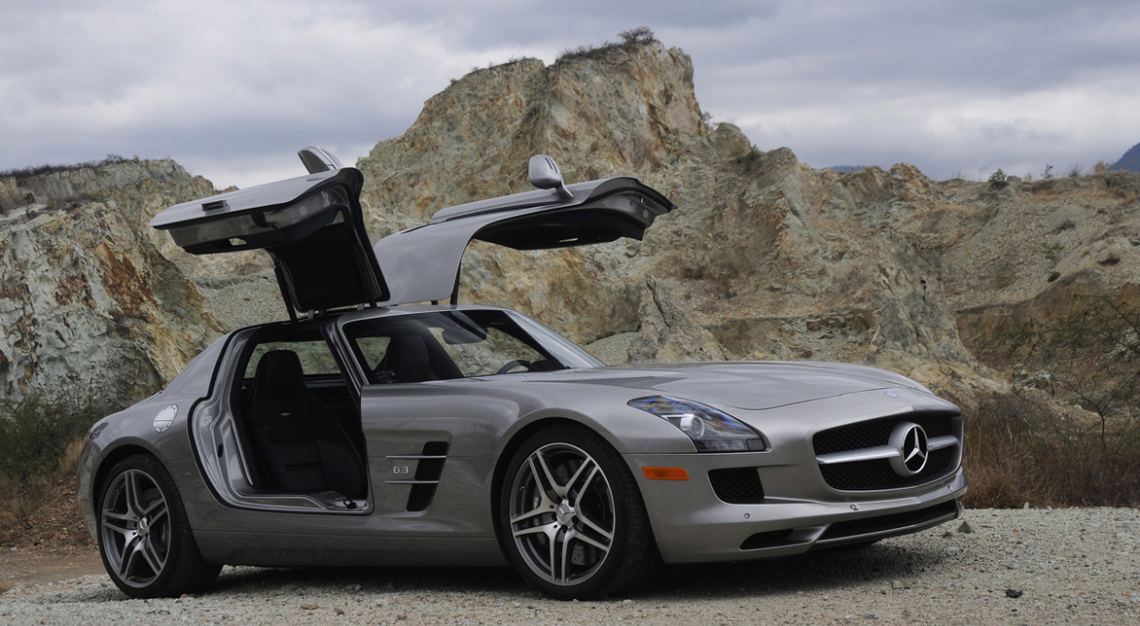
For example, McLaren’s Volcano Orange and Mercedes-Benz’ Alubeam Silver.
Another example is Mini. In typically cheeky Mini fashion, it introduced Hot Chocolate, a shade of metallic brown first introduced on the Mini Clubman in 2007. This sparked a wave of interest in brown cars at the time, and it was, according to Mini, far from accidental.
“In our colour design department, we always work three to four years in advance on new colours. That is why we try less to follow trends than to shape them – and they always have to fit the Mini brand perfectly… we were the first in the market to introduce a brown exterior and establish a trend at that time,” said Jeanette Oehlhaeuser, a designer in the Mini colour and trim department.
Suffice it to say, choosing what colours will be available on a certain model, along with what shade a car is photographed in those glossy marketing images, is a highly calculated, considered process.
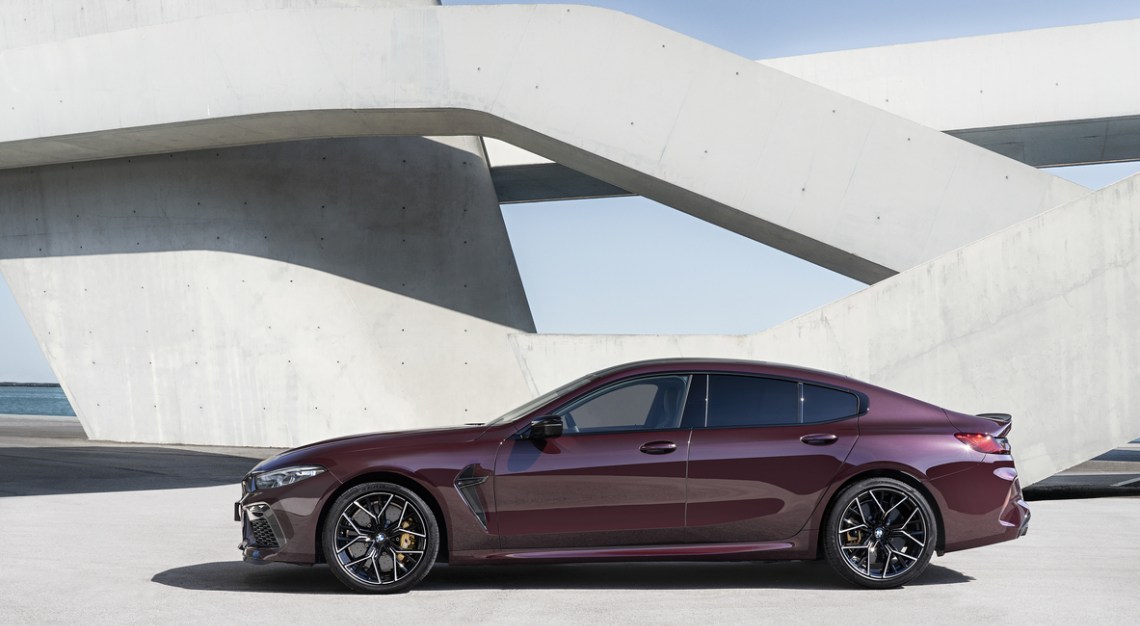
The colour well-suited to match the unconventional persona that some customers wish to emulate through their car
According to Annette Baumeister, head of colour and trim at BMW, choosing what colour a model should be depicted on those aforementioned marketing materials is the result of consultation between the design and marketing teams.“The character and exterior design [of the car] has a great influence on a colour. When working on a new colour, we constantly have these two things in mind. A colour can highlight or tone down,” she said.
If the car’s personality is particularly extroverted, it would be natural to extrapolate the flagship colour chosen for it would be similarly, well, loud. Case in point, Ametrin Metallic, a metallic eggplant-purple, used on the new M8 Gran Coupé.
Described by Baumeister as striking and unconventional, that purple suits the M8 Gran Coupé to a tee, because its potential buyers, “don’t want anything normal” and “would like to express their persona with the car.”
And indeed, exterior colour is one of the easiest ways for an owner to express their personalities. Which goes some way to explaining why virtually every carmaker in the luxury segment offers up bespoke paint options.
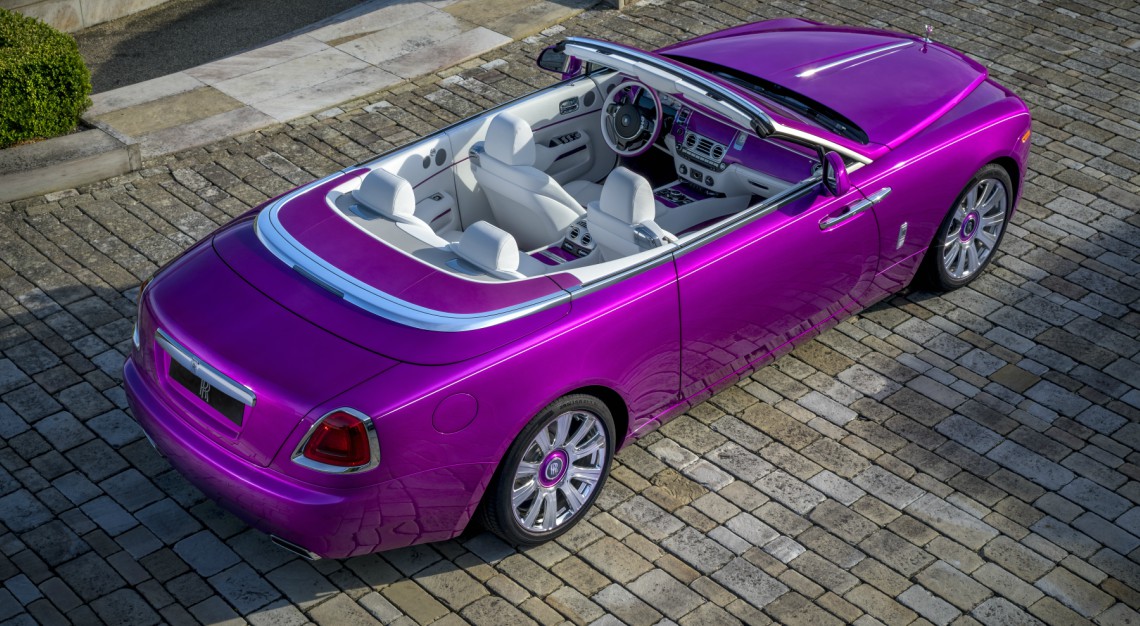 Famed Rolls-Royce collector Michael Fux has a fleet of cars painted in unique shades, like this ‘Fuxia’ Dawn here
Famed Rolls-Royce collector Michael Fux has a fleet of cars painted in unique shades, like this ‘Fuxia’ Dawn here
Lamborghini has its Ad Personam programme, Porsche has Exclusive Manufaktur, there’s Rolls-Royce Bespoke… and the list goes on. Essentially, if you can dream it up, and if your bank account can stomach it, a unique exterior colour will be created for you.
Said Bryden of Rolls-Royce, customers can choose from over 44,000 exterior colours, and that’s just the starting point, even before delving into the aforementioned custom colours, in which case the palette becomes virtually infinite.
Of course, should the customer have any choice paralysis, Bryden offered up a rather cheeky solution: “If ever there is a situation where a customer has difficulty making up their mind between one colour and another, one resolution is always available. The customer can commission a motor car in each!”
One of Goodwood’s most famous consumers of uniquely-coloured Rolls-Royce cars is Michael Fux. He owns nearly 10 Rolls-Royce cars finished in exclusive colours, and for each one, he pushed Bespoke to the limit.
Said Bryden, “The technical aspects of Mr Fux’s projects are always complex but Rolls-Royce is very well versed in unique paints, with state-of-the-art technology. For example, the colour on a flower petal versus that represented on a metal finish requires more than just a transplant. We have light equipment that allows us to gauge how a colour created at the Home of Rolls-Royce in Goodwood will look under the Californian sun.”
And Rolls-Royce’s remit, along with delivering perfection and the impossible, is a refusal to refuse. Said Bryden again, “While we are not arbiters of taste, we will counsel our customers on what works best as an exterior and interior combination. During our consultation process, we will hone the choices to just a few, perhaps with a ‘wildcard’ thrown in.”
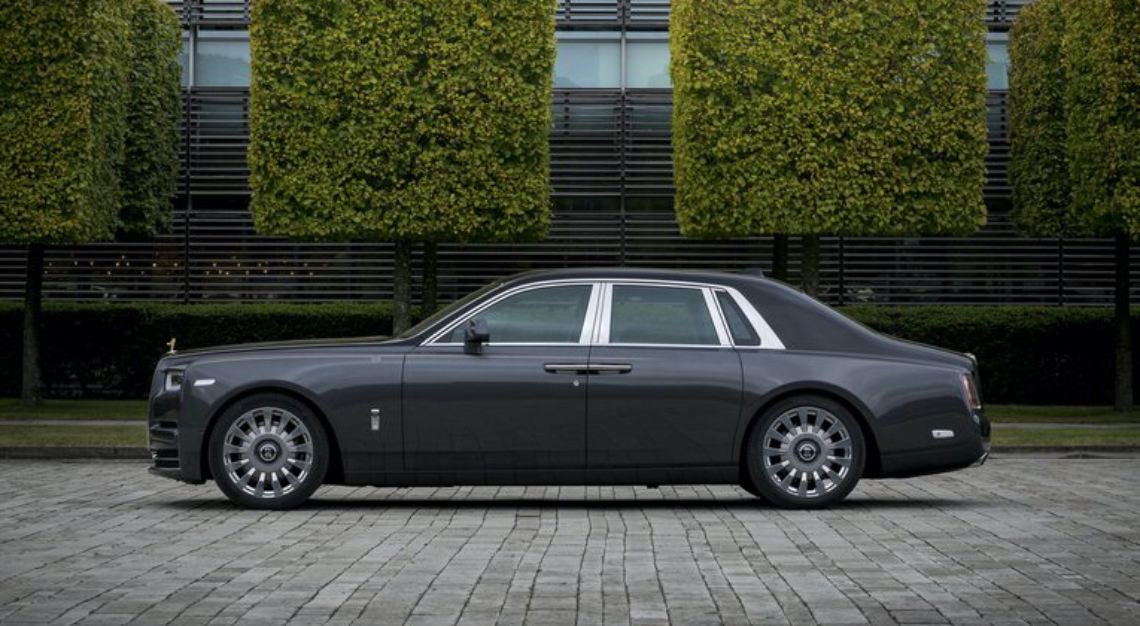 Infinite shades of black? Rolls-Royce makes it possible
Infinite shades of black? Rolls-Royce makes it possible
On the other hand, there are some manufacturers out there who are, shall we say, a little more protective of what colours go on their cars.
Said Ferrari, “Occasionally, we do receive requests for pink. Since this is not within the DNA of Ferrari, we have to gently help steer our customers away from this colour.”
Black, however, is a permissible colour for a Ferrari. And in case you were wondering a little over 10 per cent of all Ferraris sold in 2019 were a shade of midnight.
Even then, you’ll have to ask yourself exactly what shade of black would you like? There are no less than four shades of black for the DBS Superleggera on its online configurator, and that’s just the glossy finishes, excluding the sinister matte-black finish.
And even if there’s just one black hue on offer, such as the paintwork used on the one-off Bugatti La Voiture Noire — its name does translate to “the black car”, after all — you can bet hundreds of man-hours were put into its conception and execution.
Or the dark hue seen on Rolls-Royce Black Badge models, which will probably be the richest, deepest, blackest shade of black you’ll ever see on a car.
Yes, we truly have come a long, long way from the Ford Model T, and the automotive world is so much richer for it.
Subscribe to the Newsletter
Recommended for you
8 Fascinating Facts You Didn’t Know About Aston Martin
The British sports car company is most famous as the vehicle of choice for James Bond, but Aston Martin has an interesting history beyond 007.
May 1, 2024
Rezvani Will Rebuild Your 911 to Go From Zero to 100 in Two Seconds
The shop will build a version of the RR1 based on the Carrera S, GT3, and Turbo S
By Bryan Hood
April 23, 2024
You may also like.
You may also like.
Best fo Europe: Six Senses, Switzerland
Mend in the mountains at Crans-Montana.
Wellness pioneer Six Senses made a name for itself with tranquil, mostly tropical destinations. Now, its first alpine hotel recreates that signature mix of sustainable luxury and innovative spa therapeutics in a world-class ski setting.
The ski-in, ski-out location above the gondola of one of Switzerland’s largest winter sports resorts allows guests to schuss from the top of the Plaine Morte glacier to the hotel’s piste-side lounge, where they can swap ski gear for slippers, then head straight to the spa’s bio-hack recovery area to recharge with compression boots, binaural beats and an herb-spiked mocktail. In summer, the region is a golf and hiking hub.

The vibe offers a contemporary take on chalet style. The 78 rooms and suites are decorated in local larch and oak, and all have terraces or balconies with alpine views over the likes of the Matterhorn and Mont Blanc. With four different saunas, a sensory flotation pod, two pools
and a whimsical relaxation area complete with 15,000 hanging “icicles” and views of a birch forest, the spa at Six Senses Crans-Montana makes après ski an afterthought.
You can even sidestep the cheese-heavy cuisine of this region in favour of hot pots and sushi at the property’s Japanese restaurant, Byakko. Doubles from around $1,205; Sixsenses.com
You may also like.
Best of Europe: Grand Hotel Des Étrangers
Fall for a Baroque beauty in Syracuse, Italy.
Sicily has seen a White Lotus–fuelled surge in bookings for this summer—a pop-culture fillip to fill up its grandes dames hotels. Skip the gawping crowds at the headline-grabbers, though, and opt instead for an insider-ish alternative: the Grand Hotel des Étrangers, which reopened last summer after a gut renovation.
It sits on the seafront on the tiny island of Ortigia in Syracuse, all cobbled streets and grand buildings, like a Baroque time capsule on Sicily’s southeastern coast.
Survey the entire streetscape here from the all-day rooftop bar-restaurant, Clou, where the fusion menu is a shorthand of Sicily’s pan-Mediterranean history; try the spaghetti with bottarga and wild fennel or the sea bass crusted in anchovies. Idle on the terrace alfresco with a snifter of avola, the rum made nearby.

As for the rooms, they’ve been renovated with Art Deco–inflected interiors—think plenty of parquet and marble—but the main asset is their aspect: the best of them have private balconies and a palm tree-fringed view out over the Ionian Sea. Doubles from around $665; desetranger.com
You may also like.
Watch of the Week: TAG Heuer Formula 1 | Kith
The legendary sports watch returns, but with an unexpected twist.
Over the last few years, watch pundits have predicted the return of the eccentric TAG Heuer Formula 1, in some shape or form. It was all but confirmed when TAG Heuer’s heritage director, Nicholas Biebuyck, teased a slew of vintage models on his Instagram account in the aftermath of last year’s Watches & Wonders 2023 in Geneva. And when speaking with Frédéric Arnault at last year’s trade fair, the former CEO asked me directly if the brand were to relaunch its legacy Formula 1 collection, loved by collectors globally, how should they go about it?
My answer to the baited entreaty definitely didn’t mention a collaboration with Ronnie Fieg of Kith, one of the world’s biggest streetwear fashion labels. Still, here we are: the TAG Heuer Formula 1 is officially back and as colourful as ever.
As the watch industry enters its hype era—in recent years, we’ve seen MoonSwatches, Scuba Fifty Fathoms, and John Mayer G-Shocks—the new Formula 1 x Kith collaboration might be the coolest yet.

Here’s the lowdown: overnight, TAG Heuer, together with Kith, took to socials to unveil a special, limited-edition collection of Formula 1 timepieces, inspired by the original collection from the 1980s. There are 10 new watches, all limited, with some designed on a stainless steel bracelet and some on an upgraded rubber strap; both options nod to the originals.
Seven are exclusive to Kith and its global stores (New York, Los Angeles, Miami, Hawaii, Tokyo, Toronto, and Paris, to be specific), and are made in an abundance of colours. Two are exclusive to TAG Heuer; and one is “shared” between TAG Heuer and Kith—this is a highlight of the collection, in our opinion. A faithful play on the original composite quartz watch from 1986, this model, limited to just 1,350 pieces globally, features the classic black bezel with red accents, a stainless steel bracelet, and that creamy eggshell dial, in all of its vintage-inspired glory. There’s no doubt that this particular model will present as pure nostalgia for those old enough to remember when the original TAG Heuer Formula 1 made its debut.

Of course, throughout the collection, Fieg’s design cues are punctuated: the “TAG” is replaced with “Kith,” forming a contentious new brand name for this specific release, as well as Kith’s slogan, “Just Us.”
Collectors and purists alike will appreciate the dedication to the original Formula 1 collection: features like the 35mm Arnite cases—sourced from the original 80s-era supplier—the form hour hand, a triangle with a dot inside at 12 o’clock, indices that alternate every quarter between shields and dots, and a contrasting minuterie, are all welcomed design specs that make this collaboration so great.
Every TAG Heuer Formula 1 | Kith timepiece will be presented in an eye-catching box that complements the fun and colour theme of Formula 1 but drives home the premium status of this collaboration. On that note, at $2,200 a piece, this isn’t exactly an approachable quartz watch but reflects the exclusive nature of Fieg’s Kith brand and the pieces he designs (largely limited-edition).

So, what do we think? It’s important not to understate the significance of the arrival of the TAG Heuer Formula 1 in 1986, in what would prove integral in setting up the brand for success throughout the 90’s—it was the very first watch collection to have “TAG Heuer” branding, after all—but also in helping to establish a new generation of watch consumer. Like Fieg, many millennial enthusiasts will recall their sentimental ties with the Formula 1, often their first timepiece in their horological journey.
This is as faithful of a reissue as we’ll get from TAG Heuer right now, and budding watch fans should be pleased with the result. To TAG Heuer’s credit, a great deal of research has gone into perfecting and replicating this iconic collection’s proportions, materials, and aesthetic for the modern-day consumer. Sure, it would have been nice to see a full lume dial, a distinguishing feature on some of the original pieces—why this wasn’t done is lost on me—and perhaps a more approachable price point, but there’s no doubt these will become an instant hit in the days to come.
—
The TAG Heuer Formula 1 | Kith collection will be available on Friday, May 3rd, exclusively in-store at select TAG Heuer and Kith locations in Miami, and available starting Monday, May 6th, at select TAG Heuer boutiques, all Kith shops, and online at Kith.com. To see the full collection, visit tagheuer.com
You may also like.
06/05/2024
06/05/2024
30/04/2024
8 Fascinating Facts You Didn’t Know About Aston Martin
The British sports car company is most famous as the vehicle of choice for James Bond, but Aston Martin has an interesting history beyond 007.
Aston Martin will forever be associated with James Bond, ever since everyone’s favourite spy took delivery of his signature silver DB5 in the 1964 film Goldfinger. But there’s a lot more to the history of this famed British sports car brand beyond its association with the fictional British Secret Service agent.
Let’s dive into the long and colourful history of Aston Martin.
You may also like.
What Venice’s New Tourist Tax Means for Your Next Trip
The Italian city will now charge visitors an entry fee during peak season.
Visiting the Floating City just got a bit more expensive.
Venice is officially the first metropolis in the world to start implementing a day-trip fee in an effort to help the Italian hot spot combat overtourism during peak season, The Associated Press reported. The new program, which went into effect, requires travellers to cough up roughly €5 (about $AUD8.50) per person before they can explore the city’s canals and historic sites. Back in January, Venice also announced that starting in June, it would cap the size of tourist groups to 25 people and prohibit loudspeakers in the city centre and the islands of Murano, Burano, and Torcello.
“We need to find a new balance between the tourists and residents,’ Simone Venturini, the city’s top tourism official, told AP News. “We need to safeguard the spaces of the residents, of course, and we need to discourage the arrival of day-trippers on some particular days.”
During this trial phase, the fee only applies to the 29 days deemed the busiest—between April 25 and July 14—and tickets will remain valid from 8:30 am to 4 pm. Visitors under 14 years of age will be allowed in free of charge in addition to guests with hotel reservations. However, the latter must apply online beforehand to request an exemption. Day-trippers can also pre-pay for tickets online via the city’s official tourism site or snap them up in person at the Santa Lucia train station.
“With courage and great humility, we are introducing this system because we want to give a future to Venice and leave this heritage of humanity to future generations,” Venice Mayor Luigi Brugnaro said in a statement on X (formerly known as Twitter) regarding the city’s much-talked-about entry fee.
Despite the mayor’s backing, it’s apparent that residents weren’t totally pleased with the program. The regulation led to protests and riots outside of the train station, The Independent reported. “We are against this measure because it will do nothing to stop overtourism,” resident Cristina Romieri told the outlet. “Moreover, it is such a complex regulation with so many exceptions that it will also be difficult to enforce it.”
While Venice is the first city to carry out the new day-tripper fee, several other European locales have introduced or raised tourist taxes to fend off large crowds and boost the local economy. Most recently, Barcelona increased its city-wide tourist tax. Similarly, you’ll have to pay an extra “climate crisis resilience” tax if you plan on visiting Greece that will fund the country’s disaster recovery projects.
You may also like.
06/05/2024
06/05/2024
30/04/2024









